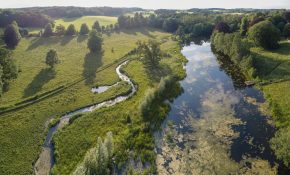Himalayan Balsam on the River Wensum
Himalayan Balsam on the River Wensum
Norfolk Rivers Trust and the Norfolk Non-Native Species Initiative (NNNSI) have joined forces to reduce, and where possible, eliminate Himalayan balsam from the Wensum catchment, as part of a 5-year project funded by Anglian Water.
Why?
Himalayan balsam (Impatiens glandulifera) is an invasive non-native species (INNS) that can spread rapidly along watercourses and out-compete native plants. Consequently, balsam can be detrimental to biodiversity, and due to its seasonal nature, it can leave entire stretches of riverbanks bare during the winter – leaving areas vulnerable to erosion.
Find out more about why invasive plants are a problem here.
What does it look like?

Himalayan Balsam

Balsam seed pods
Strategy
- A baseline survey of the Wensum catchment will be carried out between April and September 2021, when balsam is in full flower and highly visible, to ascertain its full extent and levels of infestation.
- Control of balsam will begin in 2021 at high priority locations and known hotspots including Taverham Mill.
- Balsam removals will be intensified from 2021 through to 2025 using a top-down approach: Infestations found at the top of the catchment, and upstream of Anglian Water sites, will gain priority to reduce the likelihood of recolonisation.
Take part!
The project will bring together partner organisations, businesses, community groups, work parties, walkers, anglers, canoe clubs, landowners, farmers – all with a common goal to improve their local river with the removal of invasive species.
Himalayan balsam can be controlled manually. Progress can therefore be made quickly and it is really quite satisfying! A range of practical volunteer conservation action days will be held to uproot and remove balsam plants.
Get involved by joining one of the local volunteer groups (sign up by emailing [email protected]).
You can also report recent sightings and control work carried out by completing the following survey forms (to be opened in a web browser or mobile phone):
Alternatively, email [email protected] (please include a date, location and photo, along with any other additional information such as abundance or size of infestation).
*Further details on upcoming events and volunteer groups will be posted here.*
Biosecurity
It is vital that biosecurity measures are followed at all times such as ‘Check, Clean, Dry‘ to prevent the spread of invasive species to our aquatic habitats. See more information here.
Useful information












